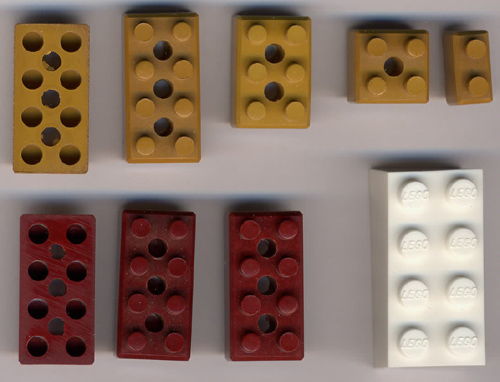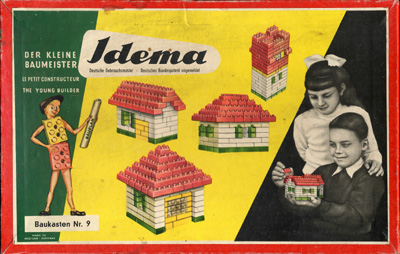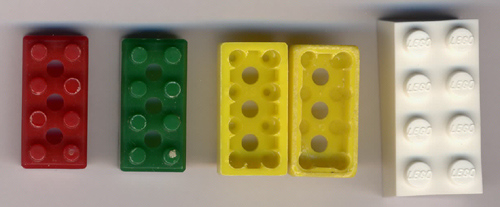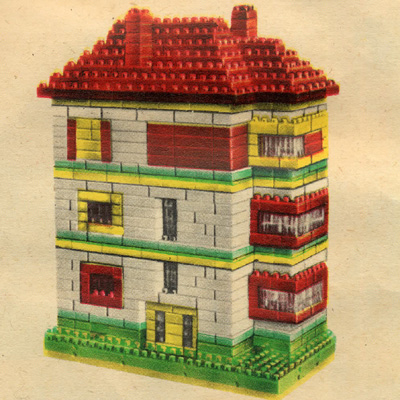|
IDEMA Spielzeugfabriek was established in Germany after the war. Traditionally, construction sets were of two types of which one used a skeleton to which panels were fixed (e.g. the British BAYCO) and the other used connecting bricks. Bricks could be made of wood, hard rubber, paper pulp, stone dust, and other materials. The stone bricks were often used in Germany and were obtained by aggregating stone dust with a glue or other congregating medium. Often they looked like small bricks with protuberances on top and recessions underneath, so as to be connectable and improve the stability of walls built with them. According to sources [1] in 1946 the German inventor Josef Dehm started tinkering with the idea of using Bakelite as a manufacturing material for toy bricks similar to the stone bricks of pre-war times. A trial run was distributed in 1949 to a few kindergartens [1] and the system was named IDEMA. Production started in 1950 by subcontracting to Hans Kirchmayer of Diedelsheim, then it was taken by Adolf Beisele in Nussbaum, before Dehm managed to finance his own works in Rinklingen and take up production in 1953, exhibiting his product for the first time at the Nurenberg Toy Fair of 1954. The two former subcontractors entered subsequently the field with their own similar systems, but that is another tale. Figures 1 and 2 below show a construction box of this early period and a set of the different brick sizes in both colors used. The bricks were made of a Bakelite-like plastic and were not hollow. The middle holes are a feature patented by Dehm to allow a string to be passed through aligned holes, to fasten bricks together. The early system was clearly original. |
 |
 |
|
Figures 1 and 2- The early IDEMA box and bricks compared to LEGO
|
|
The early IDEMA was not particularly successful and the production seems to have been interrupted for awhile during 1956/57. But by 1958 a totally new product had evolved, based on hollow plastic bricks. At that time several sets were offered in the market, both in flat boxes (Figure 3) and in tubular packings. Starting in 1958 and for the next five years, the IDEMA toy was produced by Hein Plastik GMBH in Heidelberg, before returning to Dehm's own factory in 1963. The plastic bricks evolved from a rather simple interior shape to a more complex one, with a view to ensure a more positive connection (compare the two yellow bricks in Figure 4 - the older one is next to the LEGO brick). The bricks were traditionally offered in yellow, red, green, white and transparent (Figure 4). As in the Bakelite early bricks, the edges were somewhat blunted. This feature, together with the small size of the bricks, gives the IDEMA constructions a peculiar charm (Figure 5) even though there were no individual windows or doors. Green 13x26 baseplates used at this time were clearly influenced by LEGO. |
 |
 |
|
Figures 3 and 4- The classic IDEMA box and bricks (early 1960s)
|
| The IDEMA system subsisted at least into the 1970s, when it had introduced much more sophisticated features. |
 |
| Figure 5- An IDEMA building illustrated on a circa 1960 booklet |
|
Bibliographic references
|